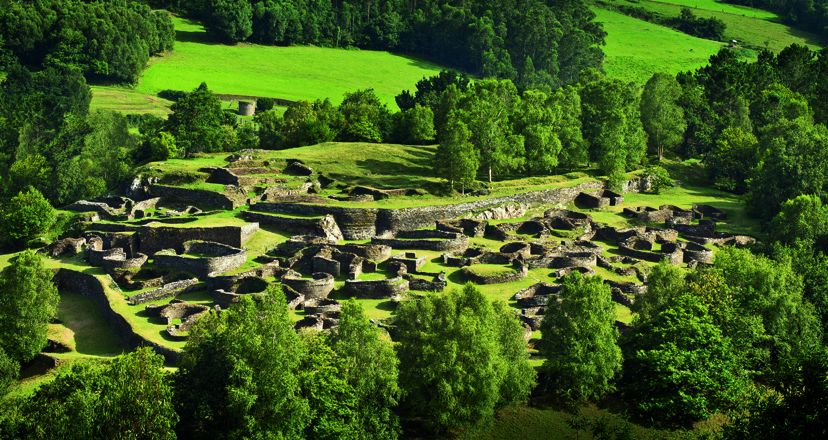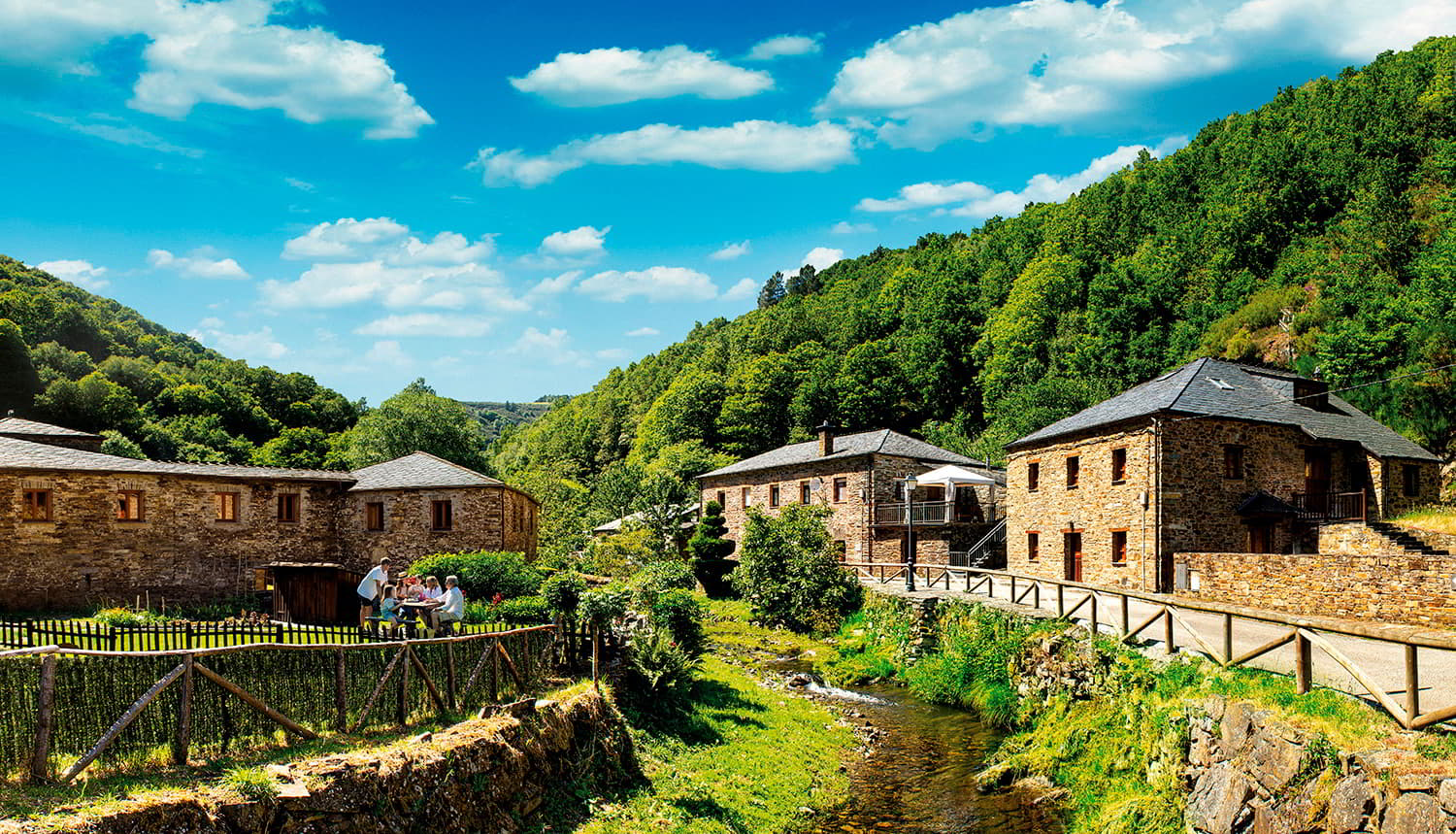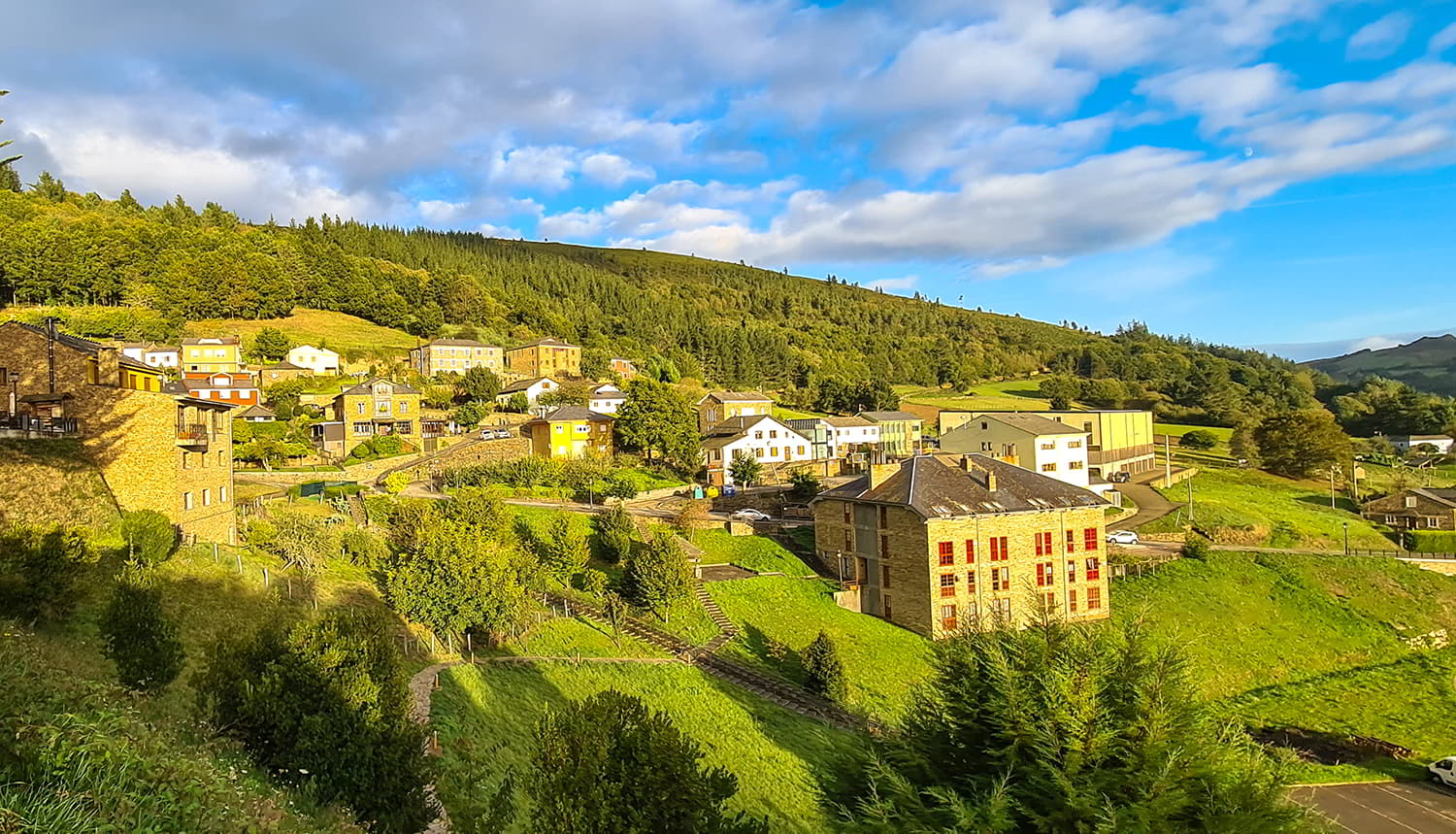Atrás A Paicega y Argul, dos joyas que te harán viajar al pasado en Asturias
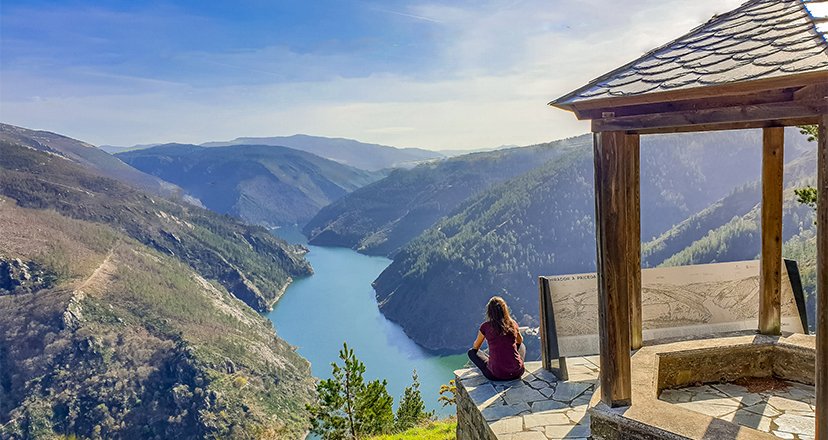
A Paicega y Argul, dos lugares para conocer el pasado de Asturias
La aldea medieval de Argul y el poblado de A Paicega son dos de las joyas que te aguardan en el concejo de Pesoz, en el occidente de Asturias. Sin duda, un interesante viaje al pasado.
El concejo de Pesoz es uno de los más pequeños del Principado de Asturias, sin embargo, atesora auténticas joyas de nuestro patrimonio que, sin duda, debes conocer. En este artículo te propongo dos rutas sencillas por este abrupto territorio del suroccidente asturiano que podrás hacer a pie, en bicicleta o en tu propio vehículo y te acercarán a la aldea medieval de Argul y el poblado abandonado de A Paicega. ¡Un auténtico viaje al pasado!
Pesoz, capital del concejo - El punto de partida
La parroquia de Pesoz es la única del concejo y también su capital. Cuenta con un museo dedicado al vino y es que, en esta zona escarpada del Occidente de Asturias, se cultiva la vid. También practican la viticultura en otros concejos vecinos que gozan del mismo microclima particular, contando incluso con su propia denominación de origen, la D.O. P. Cangas.
En Pesoz también destaca la Iglesia románica de Santiago y el Palacio de Ron, construido en el siglo XVII para Álvaro Díaz, descendiente de un poderoso linaje muy popular en las tierras nutridas por los ríos Eo y Navia. Junto a esta casona solariega puedes iniciar las rutas que te propongo a continuación.
Descubre la aldea medieval de Argul
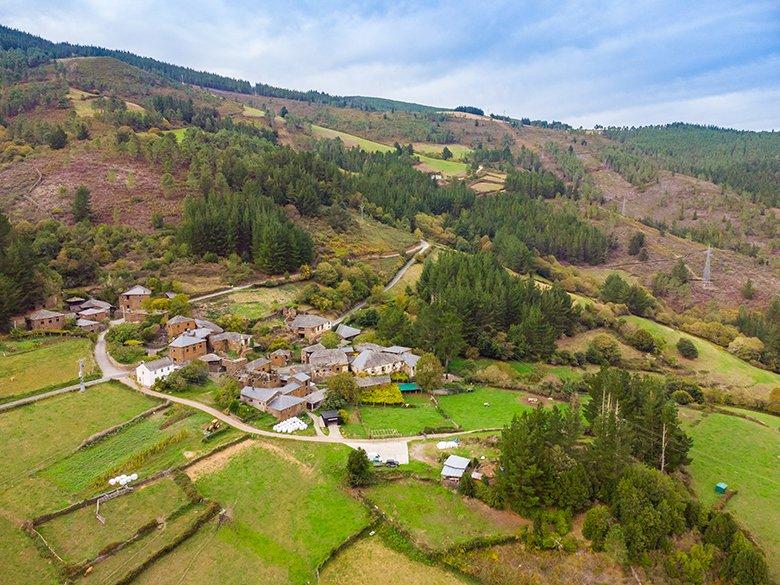
Aunque hay constancia de que los Albiones (pueblo astur-galaico) se asentaron por la montaña del Alto Navia y de que los romanos del "Conventus Lucensis" dominaron el territorio para controlar la extracción de oro en minas a cielo abierto, Argul no aparece en los archivos históricos hasta el 30 de mayo de 972. Las familias de Argul siempre han vivido de la agricultura y la ganadería, especialmente del cultivo de la vid y cereal. A lo largo de la Edad Media construyeron un total de 30 caserías perfectamente adaptadas a la compleja orografía del terreno.

Argul creció sobre un roquedo natural que condicionó la edificación de sus hogares. La roca les permitió construir grandes caserones sin la necesidad de hacer cimientos ni recios muros. Sin embargo, la pendiente de la ladera les obligó a crear una sucesión de corredores y túneles para comunicar las dependencias de las viviendas.

Las caserías de Argul se organizaban en torno a un patio central donde colocaban palomares y hórreos, construidos en su totalidad con material de la zona (pizarra, madera y barro). A través de los veiriles (túneles) movían el ganado y utilizaban los corredores para pasar de un cuarto a otro sin necesidad de salir al exterior.
Famosa en Argul es la Casa de Vilar por tener un túnel de casi 20 metros de largo, o la Casa de Juan Alonso Villabrille y Ron, escultor de la Corte de Felipe V. También destaca la Capilla de San Antonio, construida sobre el roquedo y con un curioso retablo barroco adaptado al escaso espacio interior.
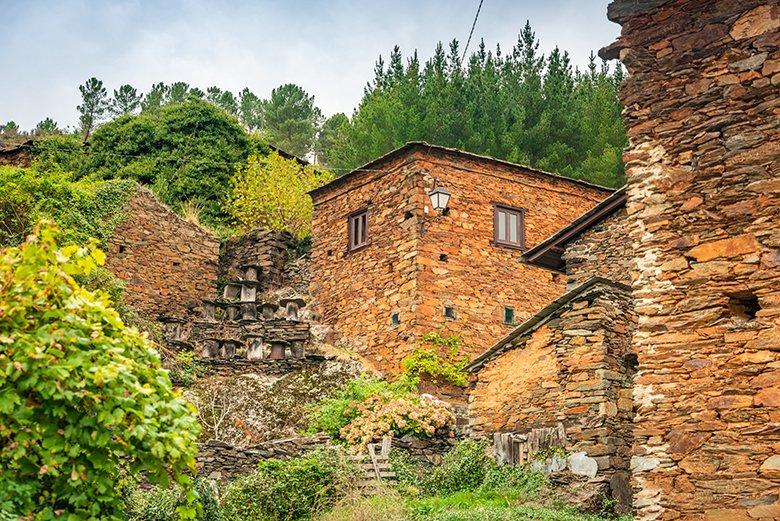
La arquitectura de Argul es una de las más singulares del Principado de Asturias, motivo por el que su Conjunto Histórico fue declarado Bien de Interés Cultural en 2004.

De Pesoz a Argul por la Ruta del Río Agüeira
Cinco kilómetros separan la aldea medieval de Argul de la capital del concejo. Puedes llegar en tu propio coche o dando un agradable paseo. Si optas por la última opción seguirás la Ruta del Río Agüeira, señalizada como sendero de pequeño recorrido PR. AS-117 y de 10 kilómetros de longitud. Esta ruta, perfectamente señalizada, no entraña ninguna dificultad, siendo apta para rutas de Btt. La senda atraviesa el bosque por lo que el firme es irregular y en algunos tramos con una pendiente acentuada. También se camina por asfalto, sin embargo, al estar en una zona aislada, el tráfico de vehículos es prácticamente inexistente.
Si dejas el coche junto al Palacio de Ron encontrarás el acceso a la ruta del Río Agüeira pasando el albergue de peregrinos. Este primer tramo, en descenso continuo, se adentra en el bosque de ribera hasta llegar al río. Siguiendo las señalizaciones debes cruzar a la otra orilla y ascender atravesando un precioso castañar. Posteriormente se desciende hasta el Molín de Sequeiros, donde hay una pequeña área que invita al descanso y, si el clima lo permite, al baño. A partir de aquí se asciende continuadamente hasta llegar a la carretera de acceso a Argul. El regreso se hace por la carretera hasta encontrar un desvío a la derecha que te llevará directo a Pesoz por una cuesta pronunciada.
A Paicega, las ruinas de un poblado obrero con vistas al cañón del río Navia
Muchos turistas viajan al suroccidente asturiano seducidos por el increíble paisaje del Valle del Navia. Un punto clave de la ruta es el Salto de Salime, uno de los más espectaculares de la tierrina. El embalse de Grandas de Salime es el más grande de Asturias, y su presa, fue la mayor de Europa durante un tiempo. Esta obra colosal finalizada en 1955 se realizó en solo una década.

Para llevar a cabo el proyecto fue necesario edificar varios poblados donde acogieron a más de 3.000 obreros llegados de toda España. También crearon una línea de teleférico de 40 kilómetros que conectaba El Espín - Coaña - con el poblado principal. Con este sistema transportaban el material sin depender de las tortuosas -y precarias- conexiones por carretera.
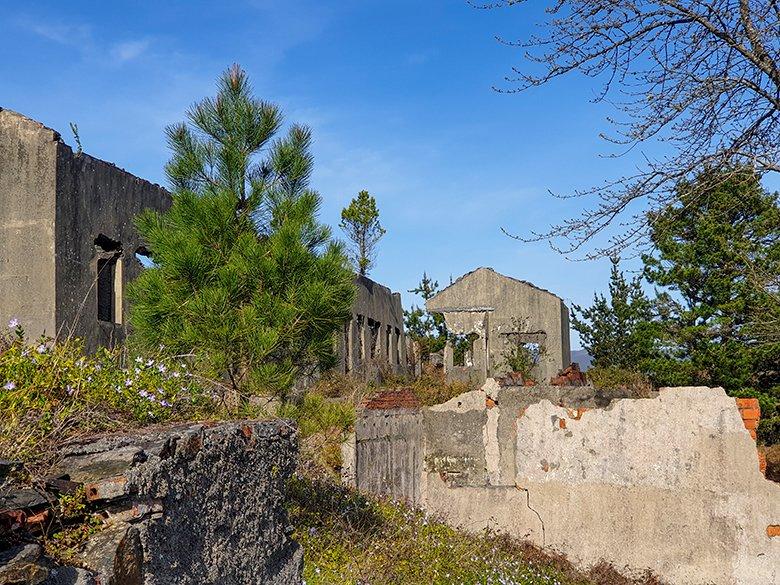
El poblado más importante fue A Paicega, hogar de muchas familias durante 10 años. Contaban, entre otros servicios, con viviendas, escuela, cantina o peluquería.
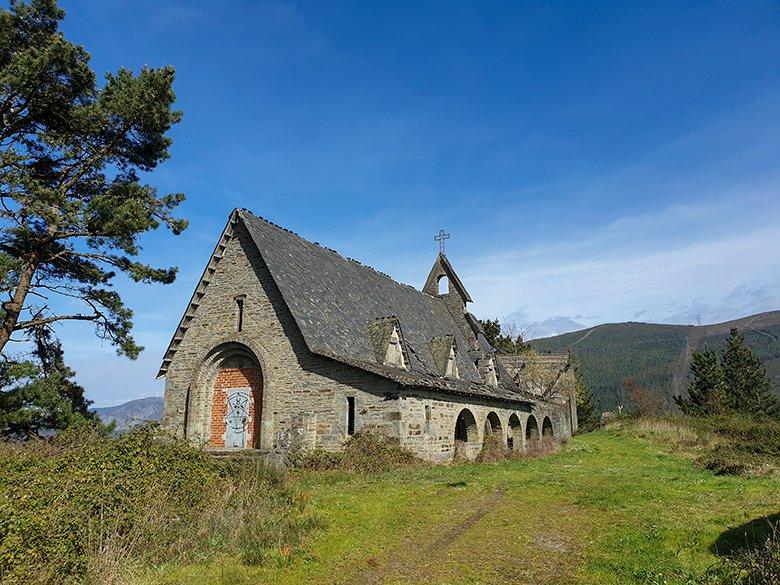
Cuando finalizó la obra los trabajadores abandonaron los poblados. Actualmente resisten los cimientos de las viviendas con restos de algún azulejo, las ventanas o las pilas del aseo. Tan solo la Iglesia de A Paicega permanece imperturbable desde que se consagró en 1948 a la Virgen de La Luz. Gracias a la iniciativa vecinal está siendo rehabilitada para albergar un espacio cultural.
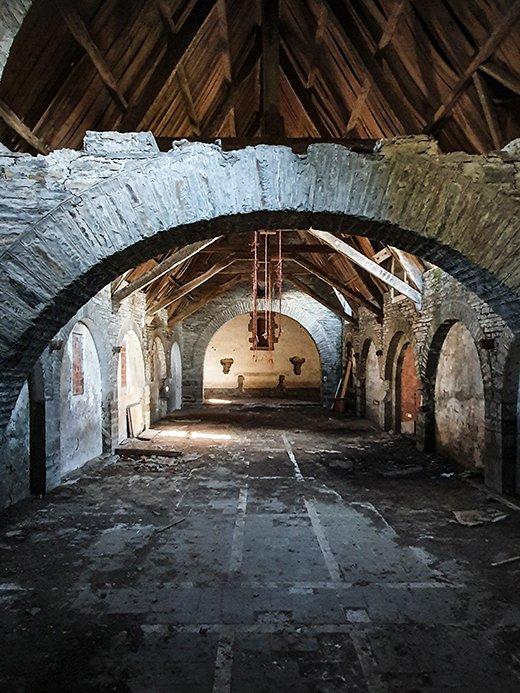
También hay que destacar el Mirador de A Paicega, ubicado en la parte baja del poblado y con unas vistas privilegiadas al cañón del río Navia.
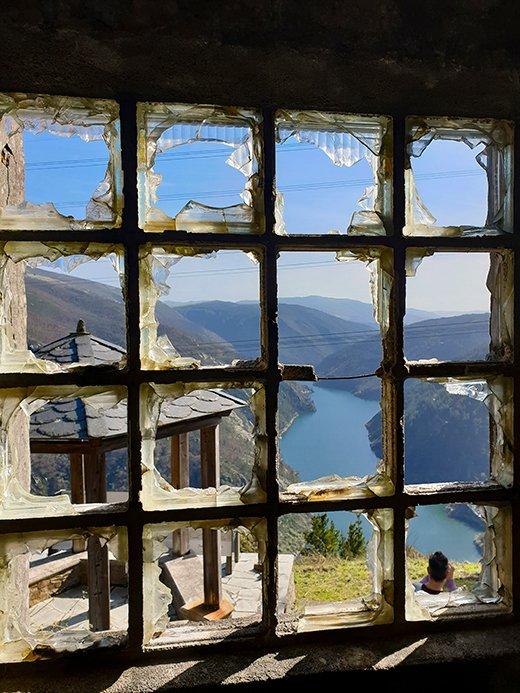
De Pesoz a A Paicega por un bosque de cuento
La segunda ruta que te propongo parte de la fuente de Pesoz, ubicada frente al Palacio de Ron. El camino ascendente entre las casas pronto pasa a ser una senda que atraviesa un bosque autóctono de castaños y robles. Aunque se va ganando altura es una subida progresiva muy fácil de llevar. Seguidamente se llega a una pista forestal donde debes girar a la derecha. Así llegarás al pueblo de Sanzo. Cruza el pueblo y sigue la pista de tierra, te llevará hasta el poblado de A Paicega. Para regresar puedes deshacer el camino andado o volver por la carretera. Esta ruta está señalizada como pequeño recorrido PR AS-169 y tiene una longitud de 8 kilómetros (ida y vuelta). Esta ruta también es apta para Btt.
Últimos consejos
Si quieres realizar las dos rutas a pie en un fin de semana, puedes hacer noche en Pesoz. En el pueblo hay varios alojamientos rurales y un restaurante, donde podrás degustar platos de la cocina tradicional asturiana.
Argul es una aldea en la que siguen viviendo algunas familias. Aunque parezca deshabitado por el estado ruinoso de la mayoría de las caserías, es un pueblo vivo. Trata de ser empático con sus vecinos, y por supuesto, pide permiso antes de adentrarte en su propiedad.
Aprovechando que vas a recorrer el poblado de los obreros que construyeron El Salto de Salime, adéntrate en la Central Hidroeléctrica de Saltos del Navia. Una visita guiada –y gratuita- de una hora de duración que te mostrará más a fondo esta joya del patrimonio industrial asturiano.
Y ya que estás en Pesoz, muy cerca, a tan solo 7 km, se encuentra el Museo Etnográfico de Grandas de Salime "Pepe el Ferreiro", una visita muy recomendable en la zona.
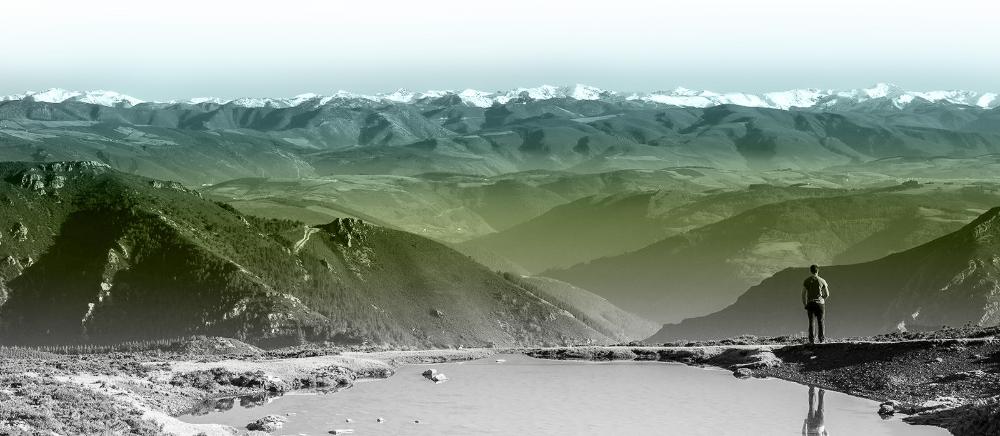
Suscríbete a nuestra newsletter y aprovéchate de ofertas, descuentos, y novedades
Suscribirse


